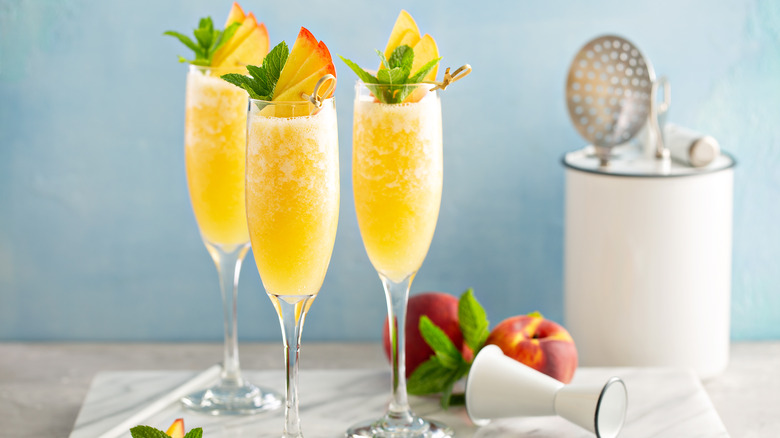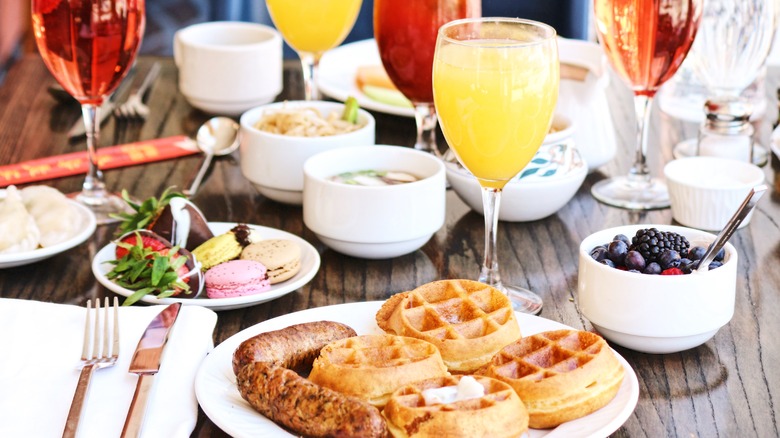The Type Of Bubbly That Goes Into Your Mimosa Does Matter
The mimosa is a well-known cocktail served at brunches around the world, but the origins of the classic drink aren't very clear. One theory is that it was invented at the Ritz Bar in Paris in 1925, but another says that it was invented in London around the same time. There's even a wild theory that it was invented by Alfred Hitchcock in the 1940s! Wherever it was created — and whoever made it first — the mimosa drink, which is named after the yellow flowers of the mimosa tree, is a favorite among brunch-goers everywhere. The cocktail is light, refreshing, and easy to make.
A classic mimosa recipe calls for equal parts champagne and orange juice, but there are many variations on the recipe that incorporate other juices, such as grapefruit juice, cranberry juice, or grenadine. Some also use sparkling wine or prosecco instead of champagne. If you are a fan of mimosas, you likely know the one rule to making the drink — the type of bubbly champagne or wine you use in the drink really does matter.
Impurities in cheap champagne cause headaches
You don't need to use the most expensive champagne for mimosas, but what you choose does matter. The flavor of the alcohol will be masked by the orange juice or other fruit juice you choose, so you can opt for a less expensive sparkling wine or prosecco for taste. However, you don't want to go too cheap, because cheaper champagnes can cause headaches. This is because they often contain higher levels of congeners, which are impurities that are produced during the fermentation and distillation process. Congeners contribute to the taste, aroma, and color of champagne, but they can also cause headaches.
Of course, not everyone is affected by this in the same way. Some of the headaches caused by mimosas may come from drinking too many, and not necessarily the quality of the champagne or other bubbly drink used to make the drink. Choosing higher quality champagne that is made with fewer impurities, however, may help reduce the risk of headaches. There are plenty of higher-quality champagnes and wines on the market that are under $20.
Choosing the best bubbly for your mimosa
The best type of bubbly for mimosas will have a crisp, dry flavor, such as brut champagne. This allows the sweetness of the orange juice to really come through without competing for dominance with the alcohol. However, you can choose other variations of champagnes or even sparkling wines for different flavors of mimosas that complement the food you are serving. For example, you can have pomegranate mimosas made with pomegranate juice. For this type of mimosa, though, a good prosecco may be a better choice.
Prosecco is a sparkling wine that is light and has a slightly sweet flavor that works well with the acidity of fruit juice, amplifying the flavor and giving lightly sweet undertones. You should try to avoid using very sweet champagnes or sparkling wines when making a mimosa, though. These can make the drink too sweet and give it an almost sticky texture, which is hard to swallow.


